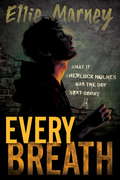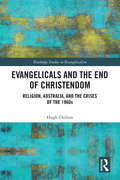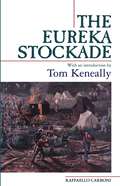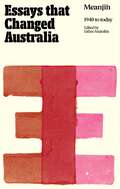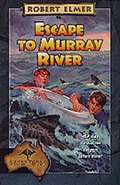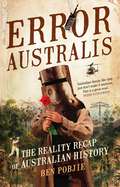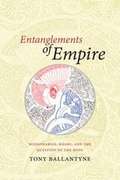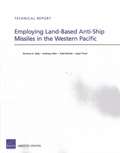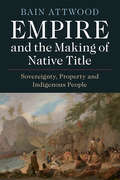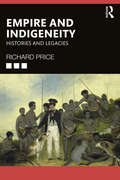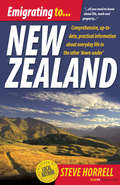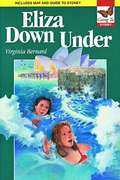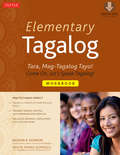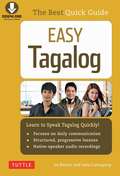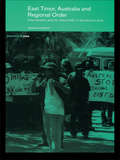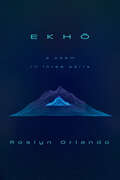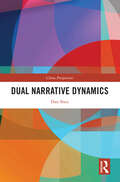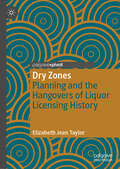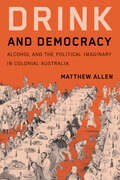- Table View
- List View
Everywhere I Look
by Helen GarnerA collection of essays, diary entries and true stories spanning more than fifteen years of the work of one of Australia's greatest writers. Helen Garner takes us from backstage at the ballet to the trial of a woman for infanticide, from the significance of moving house to the pleasure of re-reading Pride and Prejudice. The collection includes her famous and controversial essay on the insults of age, her deeply moving tribute to her mother, and the story of her joy in discovering the ukulele. A multifaceted, profound portrait of life. It glows with insight and wisdom.
Every Breath
by Ellie MarneyWhen James Mycroft drags Rachel Watts off on a night mission to the Melbourne Zoo, the last thing she expects to find is the mutilated body of Homeless Dave, one of Mycroft's numerous eccentric friends. But Mycroft's passion for forensics leads him to realize that something about the scene isn't right--and he wants Watts to help him investigate the murder. While Watts battles her attraction to bad-boy Mycroft, he's busy getting himself expelled and clashing with the police, becoming murder suspect number one. When Watts and Mycroft unknowingly reveal too much to the cold-blooded killer, they find themselves in the lion's den--literally. A trip to the zoo will never have quite the same meaning to Rachel Watts again...From the Hardcover edition. a great deal of angst and danger in Rachel's future . . . compensated for by some really hot moments with Mycroft while unchaperoned . . . But I can't give any more away!
Evangelicals and the End of Christendom: Religion, Australia and the Crises of the 1960s (Routledge Studies in Evangelicalism)
by Hugh ChiltonExploring the response of evangelicals to the collapse of ‘Greater Christian Britain’ in Australia in the long 1960s, this book provides a new religious perspective to the end of empire and a fresh national perspective to the end of Christendom. In the turbulent 1960s, two foundations of the Western world rapidly and unexpectedly collapsed. ‘Christendom’, marked by the dominance of discursive Christianity in public culture, and ‘Greater Britain’, the powerful sentimental and strategic union of Britain and its settler societies, disappeared from the collective mental map with startling speed. To illuminate these contemporaneous global shifts, this book takes as a case study the response of Australian evangelical Christian leaders to the cultural and religious crises encountered between 1959 and 1979. Far from being a narrow national study, this book places its case studies in the context of the latest North American and European scholarship on secularisation, imperialism and evangelicalism. Drawing on a wide range of archival sources, it examines critical figures such as Billy Graham, Fred Nile and Hans Mol, as well as issues of empire, counter-cultural movements and racial and national identity. This study will be of particular interest to any scholar of Evangelicalism in the twentieth century. It will also be a useful resource for academics looking into the wider impacts of the decline of Christianity and the British Empire in Western civilisation.
Eureka Stockade
by Raffaello CarboniItalian revolutionary Raffaello Carboni reached the Ballarat goldfields in 1853 looking for adventure and wealth. Instead, he found growing unrest among the miners, who were straining against harsh and oppressive government regulations. This unrest came to a head at dawn on 3 December 1854, at the now legendary Eureka Stockade. Here, 120 angry miners revolted against police and soldiers, leaving thirty-five men dead. The courage, resistance to authority and support for democratic freedom displayed by the miners has shaped ideas of Australian nationhood ever since. Raffaello Carboni, an active participant, relates the story behind the myth. His eyewitness account, first published in 1855, vividly and accurately evokes the excitement, drama and horror of the Eureka Stockade, and its aftermath. This new edition of a classic work, supplemented with an introduction by Tom Keneally, is published to coincide with the 150th anniversary of the Eureka uprising.
Essential Tagalog
by Renato PerdonStart speaking Tagalog today with Essential Tagalog! This easy phrase book gives you all the words and phrases you need in the Philippines or Tagalog-speaking environments. Even with no prior experience speaking Tagalog, you'll find everything you need in this simple guide:Easy to understand pronunciation notesOver 1,500 essential Tagalog sentences and phrases needed in everyday interactions in restaurants and shops, at work, in a doctor's office, or with friendsA glossary of 2,000 key words and phrases, including words for smart phones, the internet, social networking, and more!Special etiquette notes to help you make perfect first impressions and avoid awkward mistakesA short grammar overview that shows you how to make your own sentences and questionsLearn Tagalog today! It's easy!
Essays that Changed Australia: Meanjin 1940 to today
by Esther AnatolitisSince the 1940s, Meanjin essays have set the national cultural agenda. Arthur Phillips' idea of 'cultural cringe' has become a household word, instantly conveying Australians' sense of place in the world while expressing our frustrations and our ambitions - yet very few of us know it came from an essay first published in Meanjin. Over half a century later, Chelsea Watego's 2021 'Always bet on Black (power)' roars with the fire of a manifesto; Hilary Charlesworth's 1992 'A law of one's own?' challenges Australia's legal system with a formidable feminist ethic; Tim Rowse's 1978 'Heaven and a Hills Hoist' passionately defends suburbia; David Yencken's 1988 'Creative City' sparks a global urban planning movement with artists at the centre. This anthology brings togethers twenty impactful Meanjin essays for the first time. An introduction by editor Esther Anatolitis offers critical context and scrutiny, illustrating how profoundly Meanjin essays have changed Australia.
Escape to Murray River (Adventures Down Under #1)
by Robert ElmerBook 1 in the Adventures Down Under for middle-grade readers. Patrick McWaid's father is framed for a crime and sentenced to an Australian prison in the 1860s. But when their whole family arrives in Australia, Patrick's father has disappeared!
Error Australis: The Reality Recap of Australian History
by Ben PobjieWe're obsessed with reality television these days yet we so often neglect the greatest reality of all: the reality of our nation, and how it came to be. In Error Australis, TV columnist, comedian and history buff Ben Pobjie recaps the history of Australia from its humble beginnings as a small patch of rapidly cooling rock, to its modern-day status as one of the major powers of the sub-Asian super-Antarctic next-to-Africa region. Pobjie recognises that history can be as gripping as any reality show - as thrilling as it is to see Delta Goodrem's chair turn around, there is an argument that the Second World War was even more exciting - and like any good recapper, he provides an immediate, visceral sense of what it was like to be there in the moment at our nation's defining events. All historians know that it is only by looking at where we have been that we can understand who we are, what we stand for, and why nothing seems to work. Error Australis is a scholastic and side-splittingly funny account of a young nation that has spent many years seeking its place in the world, and almost as many years not liking what it has found.
Entanglements of Empire: Missionaries, Maori, and the Question of the Body
by Tony BallantyneThe first Protestant mission was established in New Zealand in 1814, initiating complex political, cultural, and economic entanglements with Maori. Tony Ballantyne shows how interest in missionary Christianity among influential Maori chiefs had far-reaching consequences for both groups. Deftly reconstructing cross-cultural translations and struggles over such concepts and practices as civilization, work, time and space, and gender, he identifies the physical body as the most contentious site of cultural engagement, with Maori and missionaries struggling over hygiene, tattooing, clothing, and sexual morality. Entanglements of Empire is particularly concerned with how, as a result of their encounters in the classroom, chapel, kitchen, and farmyard, Maori and the English mutually influenced each other's worldviews. Concluding in 1840 with New Zealand's formal colonization, this book offers an important contribution to debates over religion and empire.
Employing Land-Based Anti-Ship Missiles in the Western Pacific
by Terrence K. Kelly Anthony Atler Todd Nichols Lloyd ThrallLand-based anti-ship missiles (ASMs) feature prominently in the capabilities of many island nations in the Western Pacific, but the United States currently lacks such systems. This report illustrates the potential strategic advantages of the United States working with partners to build a coalition ASM capability, particularly in the event of a conflict with China, and includes an assessment of logistical challenges and positioning approaches.
Empire and the Making of Native Title: Sovereignty, Property and Indigenous People
by Bain AttwoodThis book provides a new approach to the historic treatment of indigenous peoples' sovereignty and property rights in Australia and New Zealand. By shifting attention from the original European claims of possession to a comparison of the ways in which British players treated these matters later, Bain Attwood not only reveals some startling similarities between the Australian and New Zealand cases but revises the long-held explanations of the differences. He argues that the treatment of the sovereignty and property rights of First Nations was seldom determined by the workings of moral principle, legal doctrine, political thought or government policy. Instead, it was the highly particular historical circumstances in which the first encounters between natives and Europeans occurred and colonisation began that largely dictated whether treaties of cession were negotiated, just as a bitter political struggle determined the significance of the Treaty of Waitangi and ensured that native title was made in New Zealand.
Empire and Indigeneity: Histories and Legacies
by Richard PriceIndigeneity is inseparable from empire, and the way empire responds to the Indigenous presence is a key historical factor in shaping the flow of imperial history. This book is about the consequences of the encounter in the early nineteenth century between the British imperial presence and the First Peoples of what were to become Australia and New Zealand. However, the shape of social relations between Indigenous peoples and the forces of empire does not remain constant over time. The book tracks how the creation of empire in this part of the world possessed long-lasting legacies both for the settler colonies that emerged and for the wider history of British imperial culture.
Emigrating To New Zealand: An Independent Guide
by Steve HorrellThis book is an indispensible guide to the roller coaster ride that is the emigration process. It covers all the topics and issues that anyone thinking of emigrating to New Zealand will need to know about, from the discussion phase through to making friends when you're there. - Deciding to go - Applying for a visa - Preparing to leave - Taking your pets - Arriving in New Zealand - House hunting and buying - Education and health - Cars and driving - Profiles of major cities and regions This thoroughly revised and updated new edition now includes a new chapter on how to find a job in New Zealand.
Emigrating To New Zealand
by Steve HorrellThis book is an indispensible guide to the roller coaster ride that is the emigration process. It covers all the topics and issues that anyone thinking of emigrating to New Zealand will need to know about, from the discussion phase through to making friends when you're there. - Deciding to go - Applying for a visa - Preparing to leave - Taking your pets - Arriving in New Zealand - House hunting and buying - Education and health - Cars and driving - Profiles of major cities and regions This thoroughly revised and updated new edition now includes a new chapter on how to find a job in New Zealand.
Eliza Down Under
by Virginia BernardTravel down under to Australia with Eliza Lomax, whose TV-reporter mom just got the biggest assignment of her life, covering the Summer Olympics in Sydney and Eliza gets to go along. Once she gets there, Eliza finds Sydney fascinating as she travels to its famous and little-known attractions. She experiences adventure and romance amid the excitement and spectacle of the Olympic Games. Go with her to the Australian Museum and the Royal Botanic Gardens and see a panorama of the harbor and the city from a lookout in the south pylon of the Sydney Harbor Bridge. She also finds a new friend and gets into the excitement of the Olympics.
Elementary Tagalog Workbook: Tara, Mag-Tagalog Tayo! Come On, Let's Speak Tagalog!
by Jiedson R. Domigpe Nenita Pambid DomingoTara, Mag-Tagalog Tayo!Come On, Let's Speak Tagalog!Elementary Tagalog's comprehensive approach will help students master the basics without frustration. <P><P>From learning to read Tagalog words and pronounce its sounds to using correct grammar, communicating in dialogues and building vocabulary, learners will be surprised at how quickly their skills in Tagalog develop. The expert guidance in Elementary Tagalog is carefully sequenced to be the most effective and supportive for beginners.Covering a range of topics, the lessons center on themes from the family, the home, and the community to food, travel, health, leisure time, festivals and popular culture. There are plenty of exercises, activities and practice drills to help learners acquire and master the language fundamentals, while culture notes explore the diversity, heritage and history of the Philippines.The Elementary Tagalog Workbook is a helpful companion to the textbook and will assist you in practicing and polishing your skills. Each lesson supplements the corresponding lesson in the textbook. There are ten activities per lesson, which offer a range of exercises and practice opportunities to enable you to achieve proficiency in everyday, conversational Tagalog.
Elementary Tagalog
by Jiedson R. Domigpe Nenita Pambid DomingoThis is the leading beginner Tagalog textbook and language learning package.Elementary Tagalog's comprehensive approach will help students master Tagalog, the language of the Philippines, also known as Filipino or Pilipino. From learning to read Tagalog words and pronounce Tagalog sounds to using correct Tagalog grammar, communicating in Tagalog dialogues and building Tagalog vocabulary, learners will be surprised at how quickly their skills develop. The expert guidance in Elementary Tagalog is ideal both for true beginners and heritage learners who grew up in Filipino-speaking communities or families. The accompanying MP3 audio CD improves listening comprehension and ensures correct pronunciation.Covering a range of topics, the lessons center on themes from the family, the home, and the community to food, travel, health, leisure time, festivals and popular culture. There are plenty of exercises, activities and practice drills to help learners acquire and master the language fundamentals, while culture notes explore the diversity, heritage and history of the Philippines. This is a complete language system and no prior knowledge of Tagalog is needed to begin.Elementary Tagalog is composed of twenty-four lessons in eight units. Each Lesson contains: Cultural Notes at the beginning of each unit offering explanations of social, economic and historical aspects of Filipino society. A Vocabulary List in each lesson ties in to the theme of the unit and both the Tagalog reading text and the aural activities presented in the specific lesson. Reading and Reading Comprehension which are presented mostly in the form of Tagalog language dialogues, are designed to expose the students to real-life conversations as might be had by native Filipino speakers. Three Active Learning Activities follow the dialogue and dialogue comprehension in each lesson and ask students to employ the lesson's new Tagalog vocabulary. The Grammar Section is divided into four parts: definitions of terms, examining form, grammar presentation and grammar notes. Practice exercises or activities target student's speaking Tagalog, reading Tagalog, writing Tagalog and Tagalog listening skills. An accompanying audio CD with listening activities to reinforce Tagalog learning is also included with the book.Available separately is the companion Elementary Tagalog Workbook. This helpful workbook will assist you in practicing and polishing your Filipino language skills. Each lesson supplements the corresponding lesson in the textbook. There are ten activities per lesson, offering a range of exercises and practice opportunities to enable you to achieve proficiency in everyday, conversational Tagalog.
Easy Tagalog: Learn to Speak Tagalog Quickly
by Joi Barrios Julia CamagongEasy Tagalog brings the Tagalog language and culture of the Philippines alive, giving you all the basics you need to start speaking basic Tagalog immediately. <P><P>The opening chapters introduce the essentials of Tagalog pronunciation and sentence construction, showing you how to build simple Tagalog sentences. Each subsequent chapter gives a short, easy dialogue that's useful in an everyday situation, along with a new set of sentence patterns and a vocabulary list to help you gradually build up your knowledge and repertoire for activities like making new acquaintances, going shopping, and much more. Every chapter contains helpful information on the customs and culture of this warm and friendly island nation, so that you'll soon be able to talk with ease about everything from the weather to your job and home and family. An extensive glossary at the back and a variety of interesting practice activities, with answer keys, help you build your fluency. The audio disc is a great way to learn Tagalog and gives you a solid foundation in correct pronunciation and helps you get a feel for the spoken language. Let Filipino experts Barrios and Camagong teach you how to enjoy this beautiful language.
East Timor, Australia and Regional Order: Intervention and its Aftermath in Southeast Asia (Politics In Asia Ser.)
by James CottonThis book explains the exceptional nature of the East Timor intervention of 1999, and deals with the background to the trusteeship role of the UN in building the new polity. All of these developments had an important impact on regional order, not least testing the ASEAN norm of 'non-interference'.Australian complicity in the Indonesian occupation o
EKHO: A Poem in Three Parts
by Roslyn OrlandoA profoundly playful poem in three parts, this work considers the echo as a social and historical phenomenon.From Ekhō, the nymph of Greek mythology whose voice was stolen by the gods, to the advent of Amazon&’s Echo smart speaker, the echo has been described as a condition of voicelessness, unfulfilled desire, loss, and entrapment. These poems reconsider echoing as a poetic practice and as an orienting device that tunes the world in to itself.Roslyn Orlando&’s debut collection combines Ancient Greek mythology with big tech to produce a philosophical, political, and psychological exploration of love, capitalism, resonance, and rage.
Dual Narrative Dynamics (China Perspectives)
by Dan ShenCombining narratological and stylistic methods, this book theorizes dual narrative dynamics comprised of plot development and covert progression, and demonstrates the consequences for the interpretation of literary works.In narratives with such dynamics, writers work simultaneously with overt and covert trajectories of signification, establishing a range of relationships between them. The two parallel narrative movements may complement, contradict or even subvert each other, and these relationships significantly influence readers’ understanding not just of events but also of characters, themes, and aesthetic values. The book provides a systematic theoretical account of such previously neglected dual narrative dynamics, substantiated and enriched by the textual analysis of works by Ambrose Bierce, Kate Chopin, Franz Kafka, and Katherine Mansfield. The study explores the many ways that these authors have used dual dynamics to increase the power of their narratives. In addition, the book identifies the challenges such dual dynamics present not only for narratology but also for stylistics and translation studies, and it develops sound and provocative proposals for meeting those challenges.In taking an interdisciplinary approach, this book will appeal to scholars and students in the fields of narrative and literary theory, literary criticism, literary stylistics, and translation studies.
Dry Zones: Planning and the Hangovers of Liquor Licensing History
by Elizabeth Jean TaylorThis book tells the story of local-level controls on liquor licensing (‘local option’) that emerged during the anti-alcohol temperance movement of the late 19th and early 20th centuries. It offers a new perspective on these often-overlooked smaller prohibitions, arguing local option not only reshaped the hotel industry but has legacies for, and parallels with, questions facing cities and planners today. These range from idiosyncratic dry areas; to intrinsic ideas of residential amenity and neighbourhood, zoning separation, and objection rights. The book is based on a case study of temperance-era liquor licensing changes in Victoria, their convergence with early planning, and their continuities. Examples are given of contemporary Australian planning debates with historical roots in the temperance era – live music venues, bottle shops, gaming machines, fast food restaurants. Dry Zones uses new archival research and maps; and includes examples from family histories in Harcourt and Barkers Creek, a district with a temperance reputation and which closed all its hotels during the temperance era. Suggesting ‘wowsers’ are not so easily relegated to history books, Taylor reflects on tensions around individual and local rights, localism and centralism, direct democracy, and domestic violence, that continue to be re-enacted. Dry Zones visits a forgotten by-way of licensing history, showing the early 21st century is a useful time to reflect on this history as while some temperance-era controls are being scaled back, similar controls are being put forward for much the same reasons.
Drunken Revolution
by Ivan VeljanoskiVeljanoski's poems are reflective, intriguing and vigorous. The author views Drunken Revolution as genuine philosophy for our own existence; the democracy, and the equality, the freedom and the unity, the love and the hate . . . In this collection of meditative poetry you will find the connected thoughts of a master of metaphors.
Drink and Democracy: Alcohol and the Political Imaginary in Colonial Australia (Intoxicating Histories)
by Matthew AllenThe nineteenth-century spread of democracy in Britain and its colonies coincided with an increase in alcohol consumption and in celebratory public dinners with rounds of toasts. British colonists raised their glasses to salute the Crown in rituals that asserted fraternal equality and political authority. Yet these ceremonies were reserved for gentlemen, leaving others – notably women and Indigenous people – on the political margins.Drink and Democracy traces the development of democratic ideas in New South Wales through the history of public drinking and temperance. As the colony transformed from a convict autocracy to a liberal democracy, Matthew Allen argues, public drinking practices shaped the character of the emerging political order. The ritual of toasting was a symbolic display of restraint – drunkenness without loss of self-control – that embodied the claim to citizenship of white male settlers. Yet the performative sobriety of the temperance movement was also democratic, a display of respectability that politicized its supporters around a rival vision of responsible citizenship. Drink was a way to police the limits of the political realm. The stigma of female drunkenness worked to exclude women from the public sphere, while perceptions of heavy drinking among Aboriginal people cast them as lacking self-control and hence unworthy of political rights.Drink and Democracy reveals that long before the introduction of the franchise, colonists in Australia imagined themselves as citizens. Yet even as democracy expanded, drink marked its limits.

